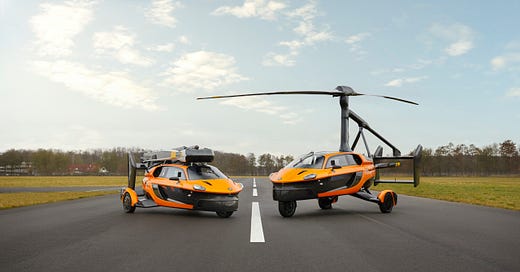The PAL-V Liberty is a flying car from the Netherlands
The PAL-V Liberty stands out in the advanced air mobility sector with its autogyro design, enabling transition between driving and flying modes in 5 minutes, expected to be available from €299,0001. Unlike many novel aircraft designs, the Liberty's main rotor is unpowered and provides lift through autorotation rather than being driven by a motor.
Recently, PAL-V, in collaboration with the Netherlands Aerospace Centre (NLR)2, announced the completion of the Liberty's rotor blades, marking a significant step toward serial production:
The rotor blades are 20% more efficient with less drag compared to equivalent blades, resulting in better performance and fuel economy. Due to the advanced composite technology, a set of two rotor blades only weighs 35.8kg while spanning over almost 11m in length.
For insurers, the dual nature of vehicles like the PAL-V Liberty necessitates an approach to coverage that provides clarity around the blending of automotive and aviation exposures. While insurance frameworks will ask the usual aviation questions, they may also need to tackle the potential integration into existing road traffic systems, clearly defining the distinction between aviation and automotive liabilities.
Skyrisks | Specialists in AAM & UAS insurance
Get in touch with Skyrisks
See what we offer
AAM International: Rotor Development Completed for Flying Car




